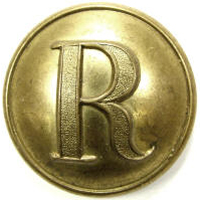
Harry Ridgeway
authentic Civil War relics, bought and sold.
 |
Civil War Relicman Harry Ridgeway |
| Winchester, Virginia
USA (changed hands 70 times in the Civil War!) authentic Civil War relics, bought and sold. |
|
| http://relicman.com/ |
| Weapons (pre 1898) of the Civil War Relicman Sales catalog. |
| W1527 ### Breechloader, Sharps single shot percussion carbine, Model 1853, slanting breech, .52cal. (sn# 9954) . Sharps carbine was a single shot percussion breechloader using paper cartridge. The Sharps series of rifles and carbines became the most important breechloaders utilized in the Civil War. The Model 1853 played a prominent role in the Kansas struggle and is sometimes referred to as the John Brown Sharps or Beecher's Bibles, it was available well before the Civil War, was mostly bought by private individuals or militia groups. Serial numbers for the Model 1853 generally run 9,000 to 19,000. The Model 1853 was essentially the same weapon as the Model 1852 and continued use of the slanting breech, so called based on the angled position of the breech on the frame. Manufactured by Sharps Rifle Manufacturing Co., Hartford, Connecticut. Mark on top of barrel: SHARPS RIFLE / MANUFG CO. / HARTFORD, CONN. Mark on breech tang: C. SHARPS / PATENT / 1848 and serial number. Mark on the receiver: C. SHARPS' / PATENT / 1852. Standard features include: brass buttplate, brass patchbox, iron loading lever serves as a trigger guard, one brass band, percussion nipple was designed to utilize a tape primer system that did not work very well and was usually disabled, but conventional cap served effectively, hinged Sharps long range sight, rifling with six lands and grooves. Research Center: Weapon2423-Breechloader-Sharps-Carbine-Model-1853 . Reference: Flayderman 5F-010. Barrel length 21.5in. Serial number, 9954. Carving WM YARBRO TIFTON 1862 , meaning of this is not determined. For sale $5,500.00 Details click: http://relicman.com/weapons/Relicman-Sales-Weapon-W1527.html |
| Civil War Relicman,
Harry Ridgeway, Civil War weapons, Relicman sales catalog. Sale listings click: http://relicman.com/weapons/Relicman-Sales-Weapon0000.html. Sale listings click: http://relicman.com/weapons/Relicman-Sales-Weapon0000.html. |
| Ridgeway Civil War Research Center, A virtual examination of artifacts of the American Civil War Weapons Research center, weapons, click: http://relicman.com/weapons/Weapon0000-Index.html. Research center, weapons, click: http://relicman.com/weapons/Weapon0000-Index.html. |